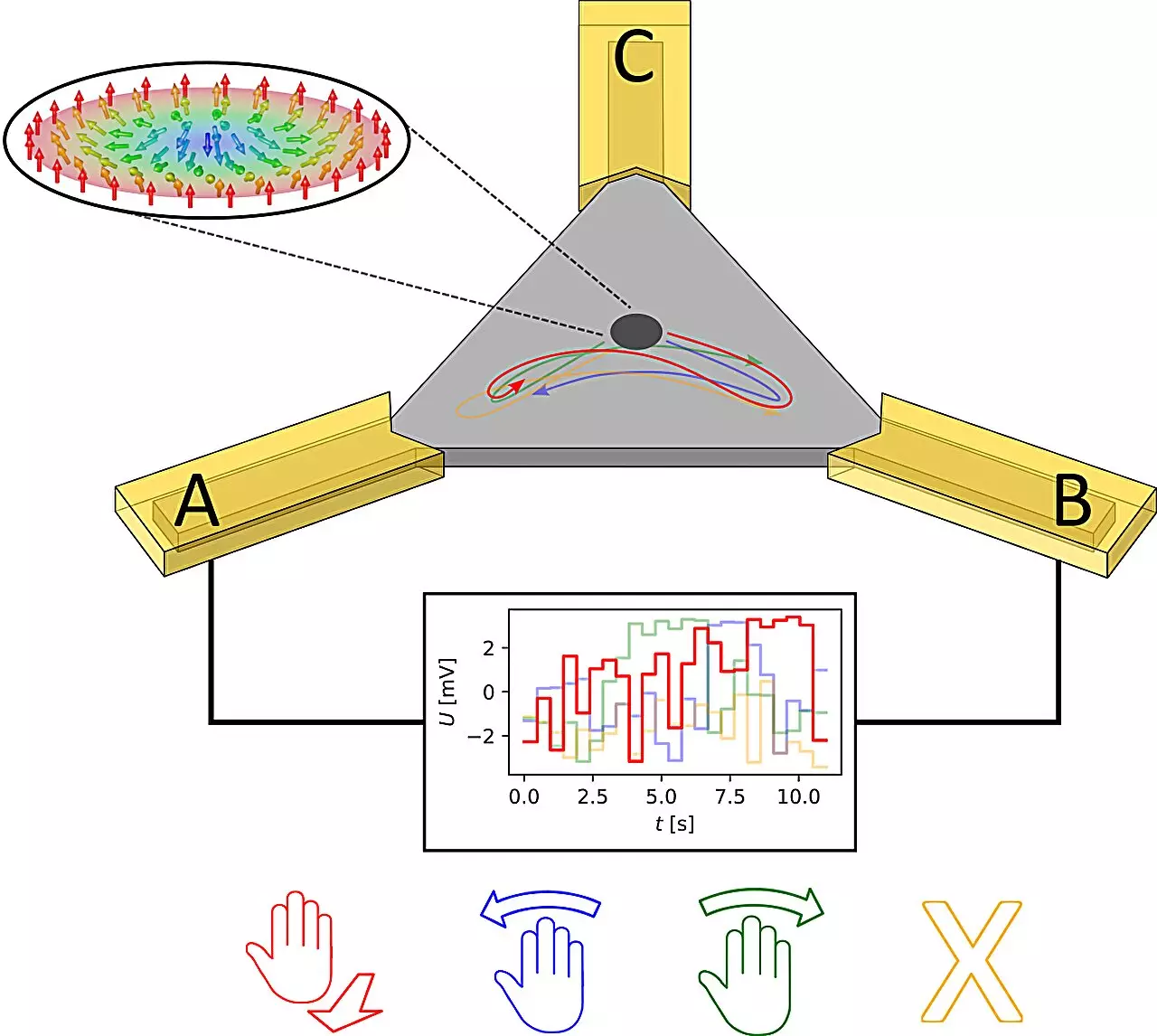Recent advancements at Johannes Gutenberg University Mainz (JGU) have set a new benchmark in gesture recognition through the integration of Brownian reservoir computing with skyrmionic technology. This pivotal research opens doors not just in how human-computer interaction is executed but also redefines the paradigms of energy efficiency within computing systems. The findings, spearheaded by Grischa Beneke under the guidance of Professor Mathias Kläui, highlight a shift towards less energy-intensive hardware solutions that might soon overshadow traditional software-based methods.
Reservoir computing is an inventive computational framework that mimics certain aspects of artificial neural networks but departs significantly in its operational requirements. Unlike conventional models that necessitate extensive training with gargantuan datasets, reservoir computing only requires a minor adjustment in the output mapping. This simplifies the process, effectively conserving energy and computational resources. In an intriguing analogy, Beneke likens the workings of their system to a pond wherein the ripples created by thrown stones reveal the details of the stones’ placement—a clever metaphor that encapsulates the underlying principles of the research.
The innovative aspect of this research lies in its tangible application of scientific theory into usable technology, specifically the ability to recognize hand gestures with high accuracy. This application not only showcases the potential for human-device interaction but also highlights the effectiveness of Brownian reservoir computing in practical scenarios.
In their experiments, the research team utilized Range-Doppler radar technology, paired with two radar sensors from Infineon Technologies, to capture and interpret hand gestures such as swiping left or right. The radar data was subsequently transformed into voltages that facilitated the activation of a skyrmion in a specially designed multilayered thin film stack. This interaction showcases how flexible and functional skyrmions can be in terms of translating complex movements captured by the radar into understandable gestures and commands for the system.
The recognition of gestures using radar technology represents a novel approach in the field, contributing to both the sophistication and accuracy of gesture recognition technology. The findings are corroborated by comparisons with traditional software methods, revealing that Brownian reservoir computing can achieve, if not surpass, the precision of its neural network counterparts.
Skyrmions, which are unique magnetic configurations akin to tiny whirlpools, have garnered attention for their potential applications in next-generation computing and data storage solutions. The research team’s enthusiasm about these chiral magnetic entities cannot be understated, as they reveal a dual potential: serving as data carriers while also acting as efficient components within computational systems. Professor Kläui emphasizes how skyrmions’ capacity for random motion diminishes sensitivity to local magnetic anomalies, allowing the technology to perform optimally with lower energy inputs.
Harmonizing the operations of skyrmions with reservoir computing provides a fresh outlook on energy-efficient computing. Conventional systems often struggle with power consumption during intensive calculations, but this new approach effectively mitigates that challenge. By utilizing lower currents to induce skyrmion movement, researchers have crafted a trailblazing candidate for energy-efficient technology.
While the research showcases promising results, it is evident that there remains room for optimization, particularly regarding the read-out process currently reliant on a magneto-optical Kerr-effect (MOKE) microscope. The potential transition to a magnetic tunnel junction could streamline the size and efficiency of the entire system, indicating a pathway for further innovation in this burgeoning field.
Additionally, traits like time scale adaptability could lead to broader applications across diverse challenges, enhancing the system’s versatility beyond gesture recognition alone. This flexibility positions Brownian reservoir computing as a significant player in an era that increasingly values both efficiency and effectiveness in technology.
The pioneering work done at JGU encapsulates a confluence of theoretical physics and practical application, embodying a significant shift in the landscape of gesture recognition technology. The marriage of Brownian reservoir computing with skyrmion dynamics sets a precedent for energy-efficient systems that not only meet current computational demands but are also poised for future advancements. As researchers continue to unravel the complexities of this technology, we stand at the threshold of an era marked by enhanced interaction between humans and machines, paving the way for smarter, more responsive computing solutions.

